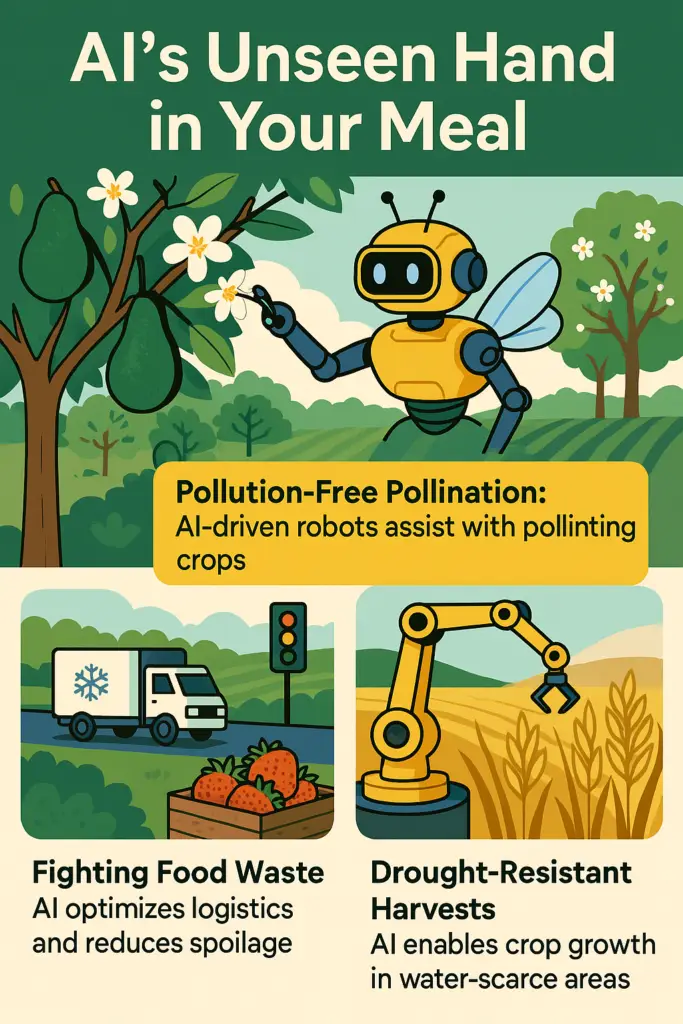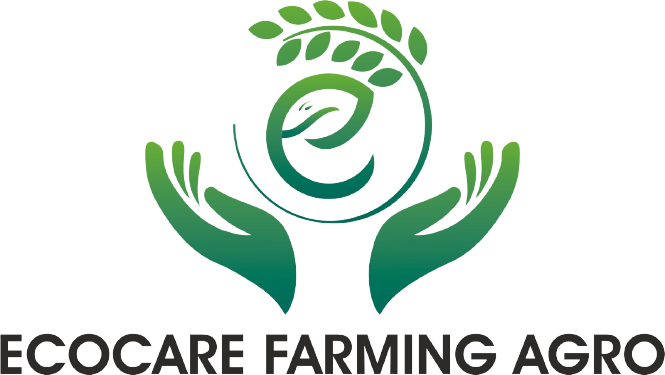Behind every bite of food lies a hidden journey—one increasingly guided by AI. From drought-defying crops to waste-free supply chains, this technology is quietly rewriting the rules of farming to combat climate chaos.
AI’s Unseen Hand in Your Meal
- Pollution-Free Pollination:
As bee populations decline, AI-driven robots are stepping in. These machines identify flower types, apply pollen with precision, and learn which plants need extra attention—ensuring orchards of fruits like almonds and avocados thrive even in uncertain ecosystems. - Fighting Food Waste:
Nearly a third of global food production is lost before reaching plates. AI tackles this through:- Smart Logistics: Temperature-controlled trucks adjust cooling systems in real time, accounting for traffic delays or heatwaves.
- Demand Forecasting: Algorithms predict market trends, helping farmers sell fragile produce like berries before they spoil.
- Drought-Resistant Harvests:
In arid regions, AI cross-references groundwater data, crop genetics, and traditional dryland farming techniques. The outcome? Staple crops like wheat and maize that yield robust harvests with minimal water.

Balancing Ethics and Innovation
AI’s role in farming sparks debate. Who owns the data when drones map a village’s fields? Can algorithms replace the intuition of a farmer who senses rain by the scent of the wind?
A grassroots movement is emerging. Farmers worldwide are adapting open-source AI tools, tweaking code to suit their unique landscapes. In East Asia, elderly growers mentor AI systems, teaching them ancestral tricks—like judging grain ripeness by the sound of rustling stalks. These systems then pass the knowledge to younger generations, creating a bridge between past and future.
The Road Ahead: AI as Partner, Not Overlord
The future of farming isn’t robotic monocultures but augmented ecosystems. Picture:
- Seed Revival: AI analyzes heirloom seeds to rediscover drought-resistant traits lost during industrial farming’s rise.
- Carbon Farming: Smallholders use AI to measure soil carbon levels, earning credits to fund sustainable practices like cover cropping.
In tropical rainforest regions, farmers exemplify this balance. They deploy AI to monitor deforestation risks while preserving traditional shade-growing methods that nurture biodiversity and fertile soils.
Author : Apoorva Nerkar

